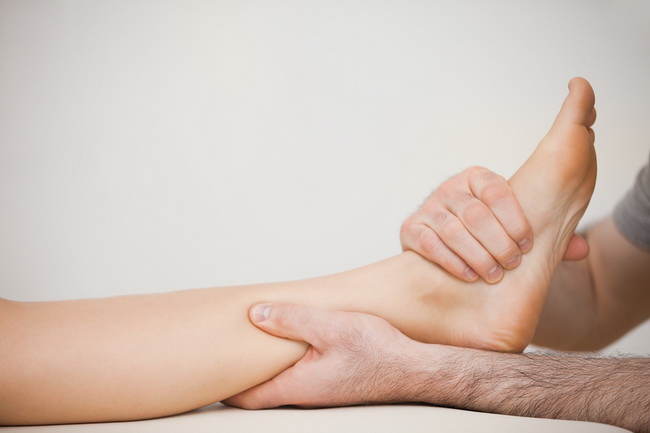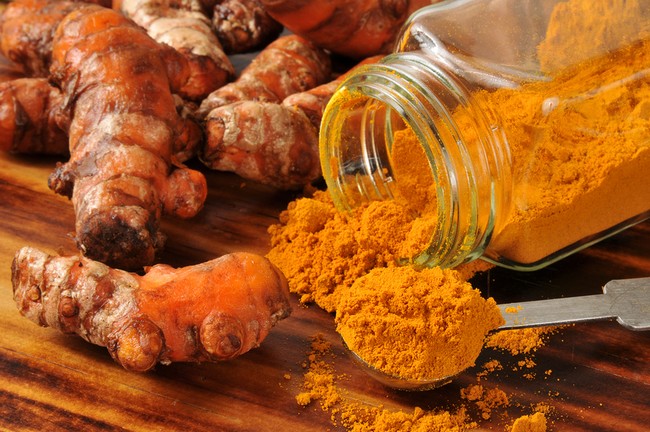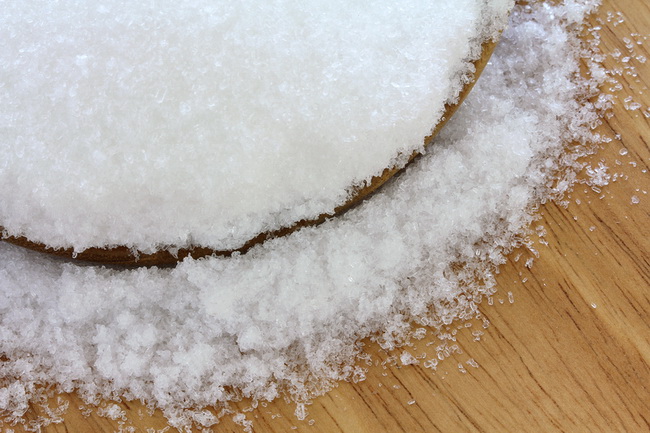- Make It Yourself Lavender Heart-Shaped Bath Bombs!
- 20 Things You Never Knew About “Down There”
- 12 Best Foods For Those Suffering From Arthritis Pain
- 12 Personal Hygiene Mistakes Almost Everyone Makes (Mom Never Told You About #4!)
- 15 Medicinal Plants And Herbs From The Cherokee People
- 12 Mind-Blowing Benefits Of Drinking Coconut Water During Pregnancy
- 12 Outstanding Winter Foods That Won’t Fatten You Up Like A Christmas Turkey
12 Best Home Treatments for Achilles Tendonitis (#4 is Awesome!)

Photo credit: bigstock.com
If you are one of those “weekend warriors” who has injured your Achilles tendon due to overuse, whether it be from dance, football, soccer, tennis, volleyball, running, or whatever your favorite sport is, you know how terribly painful and debilitating this condition is.
Achilles tendonitis is overuse of the tendon that attaches your calf muscles on the back of your leg to your heel. The damage usually happens because people don’t warm up before exercising or suddenly begin doing much more than they did before; for example, suddenly playing soccer 4 times a week when before it was only once a week.
Ladies, sometimes Achilles tendonitis happens when you wear those skyscraper heels for long hours. Other factors for developing this condition are those who have flat feet, obesity, high blood pressure, or diabetes.
Most people find Achilles tendonitis brings them stiff, sore muscles, painful walking, even simply trying to stand is painful ordeal.
Serious cases can lead to a rupture, in which case, surgery is your only option. However, as long as you haven’t reached that point, you can turn this painful problem around using a few of the following 12 home treatment methods.
Every person is different and what works for one does not always work for another. This is why you should always consult your doctor or physical therapist to be certain that you are doing what is right for you and your special condition.
1. Ginger
This spice works great both internally and externally. Ginger has powerful anti-inflammatory and antioxidant compounds which not only improve blood circulation, but reduce overall pain and swelling by reducing inflammation. Try drinking two or three cups of ginger tea each day. You can also add ginger to your cooking. Try massaging the affected area with warm ginger oil twice each day as well. You can take ginger supplements, but speak with your doctor to determine the correct dosage for your condition.
2. Ice It
Using ice or a cold compress is always good for reducing swelling and pain. It can also relax the muscles, which should relieve pain as well. Wrap a few ice cubes or an ice pack in a towel and hold it on the affected leg or attach it with some rubber bands or bits of cloth to secure it in place. Allow the ice to do its job for 15 minutes, then remove for at least another 15 minutes to avoid damaging the skin. You can repeat this several times each day. If the ice is too cold and causes you more pain, try a washrag that has been soaked in cold water instead. Never apply ice or an ice pack directly on the skin as you can cause frostbite in a matter of minutes.
3. Don’t Smoke
Not even that herbal supplement, not as long as you are trying to heal. Smoking anything slows the healing process because it decreases the blood supply to the affected leg and delays the repair and regeneration of tissue.
Continue to Page 2

Photo credit: bigstock.com
4. Turmeric
The active ingredient in turmeric is curcumin. This compound is a powerful anti-inflammatory that can reduce swelling and pain. Boil 1 teaspoon of turmeric powder in 1 cup of milk and allow to simmer over a low flame over medium heat. Add a tablespoon of honey and drink this mixture twice each day to encourage healing. You can also take curcumin supplements. Consult your physician to find out the exact dosage for your condition.
5. Warm Wraps or Elastic Wraps
To reduce the amount of stress placed on your calf muscles, you can use compressive bandages, made of elastic, to give you some relief from swelling and pain. This will also help encourage the healing process. Follow the directions on the package and wrap both your foot and calf with the compression wrap. This method works even better if you are able to keep the affected leg elevated to reduce swelling. Keep the wrap on for a few days or as instructed by your doctor. Avoid wrapping too tightly, as this can actually make your condition even more painful.
These wraps are available in almost every drug or department store or talk to your doctor about which wraps would work best for you if you have any questions.
6. Do Your Homework
If you have seen a doctor and he has given you a set of exercises or if your physical therapists have suggested an at-home set of exercises for you, be sure to do them. Gentle stretching and strengthening exercises can cut your recovery time significantly and help to prevent future incidences.
Continue to Page 3

Photo credit: bigstock.com
7. Massage
A gentle massage will help to increase circulation, reduce swelling and stiffness, as well as relax the muscles. You can use coconut oil, sesame oil, olive oil, or sweet almond oil, and warm it for a few minutes before using. Don’t allow the oil to get too hot, you want it to be warm and soothing, not burning hot! Using only your fingertips, gently massage the lower part of your foot, heel, ankle, and calf for 5 to 10 minutes. If you have difficulty reaching the area yourself, enlist the help of a friend, your spouse, or see a professional massage therapist. Your doctor or physical therapist should be able to give you a reliable referral.
8. Apple Cider Vinegar
This seems to make every list, doesn’t it? This is another home remedy that really works because apple cider vinegar is a natural anti-inflammatory in addition to its alkalizing compounds. Both of these factors can reduce inflammation and pain. You can use this both internally and externally for best results.
Add 1 cup of raw, unfiltered apple cider vinegar to a small tub of water (a clean trash can works well for this if you don’t have a bathtub). Soak your leg for 20 to 30 minutes. Do this once per day until your leg recovers. Also, you can add 2 teaspoons of apple cider vinegar and 1 teaspoon of honey to a glass of water and drink twice each day to stop inflammation from the inside out.
9. Acupuncture
One study published in the Chinese Journal of Integrative Medicine in 2013 showed that acupuncture lessened pain and improved activity for those with chronic Achilles tendonitis when compared to those who only did eccentric exercises. Acupuncture seems to work by increasing the blood volume and oxygen levels to the tendon, which will reduce swelling and pain. Always seek out a qualified acupuncture expert. Ask your doctor for a recommendation.
Continue to Page 4

Photo credit: bigstock.com
10. Epsom Salt
Epsom salt isn’t actually a salt, it contains magnesium, which encourages healing, relaxes the muscles, and reduces swelling and pain. Add 1 cup of Epsom salt to a hot bath and soak for 20 to 30 minutes. Repeat three or four times each week until your tendon heals completely.
11. Vitamin E
This fat-soluble antioxidant fights off the free radicals by relieving inflammation, and therefore pain. This vitamin also improves circulation, which will reduce swelling and encourages healing. You can take supplements and eat more foods that contain vitamin E including almonds, kale, spinach, turnip greens, Swiss chard, and hazel nuts.
You can also massage the affected area two or three times each day with vitamin E oil.
SEE ALSO: 12 Natural Solutions for Stiff or Frozen Joints
12. Castor Oil
Castor oil is mainly made of ricinoleic acid, which is a super anti-inflammatory. One study, published in 2001 in the Naunyn-Schmiedeberg’s Archives of Pharmacology, found that castor oil contains capsaicin-like, anti-inflammatory compounds, which were found to be most effective when used in repeated applications. You can apply castor oil to the affected area two or three times each day to relieve pain and stop inflammation.
Additional Tips:
- Keep the affected leg elevated as much as possible to encourage healing and reduce swelling.
- Avoid activities that put stress on your tendon, such as climbing stairs or walking uphill.
- Wear shoes that give you adequate cushioning for your heel.
- Avoid wearing high heels for long periods of time or even every day.
- When your tendon begins to heal, increase your activity level gradually.
- Do exercises to strengthen and lengthen your calf muscles.
References:
































